
Lake Nipigon is a large, beautiful body of water. Deep, cold, and clear. It has sheer cliffs, sand beaches, and rocky shores. It is a baby and sometimes a monster. But its rugged beauty is all that and more than your spirit can imagine. In winter, it freezes and is blanketed with snow.
As the thick ice melts in the spring, the lake welcomes nature. Loons, ducks, eagles, osprey, and white pelicans return to join the animals that have wintered. Otters play in shallow bays; moose and caribou graze along the shoreline of its many islands. Bear wander aimlessly, wolves howl at night serenading the moon. The loons yodel, searching for mates. Water flowing into the lake comes from many streams and crevices, nourishing the lake with fresh runoff.
In summer mauve flowers sprout through the moss on rock faces as water splashs up to moisten them. Young birds and animals appear with their parents, playing, relaxing, rarely ever bothered by humans.
Fall comes early. At this time of the year, the lake can go from a calm baby to a raging monster. The blue water turns grey; it boils and churns with the wind. The ocean-sized waves it creates would scare the most hardy of mariners.
The cold nights return, the water becomes calm again, and blue ice forms. Soon snow blankets the lake for the winter.
Lake Nipigon early years
It was 1959, I was invited by Bud and Dot to try brook trout fishing on Lake Nipigon.
In the early years, the only boat I had was a 14-foot cedar strip fisherman with a 10-horsepower Johnson and a 1.5- horsepower Viking air-cooled spare engine. It was a small boat for this lake, but we went anyway.
The trip started from Thunder Bay (Fort William), moving up the old highway, from Lakeshore Drive to Mackenzie, to the town of Nipigon, then on to the Pine Portage Dam. There was no direct road access to the south end of Lake Nipigon in the early years.
From the Pine Portage dam, we traveled up Forgan Lake, the power dam reservoir, then on to the overflow, and a short set of rapids — water that exits the big lake. Once at the overflow, we pulled the boats up the rapids to South Bay on Lake Nipigon. We then headed across to Albert Island, where we set up the overnight camp.
We fished Albert and Victoria Islands and sometimes, ventured across to the Otter Head (a point of land with sheer cliffs that looks like an otter’s head). It was a very long trip, but the beauty and tranquility of the lake made it all worthwhile.
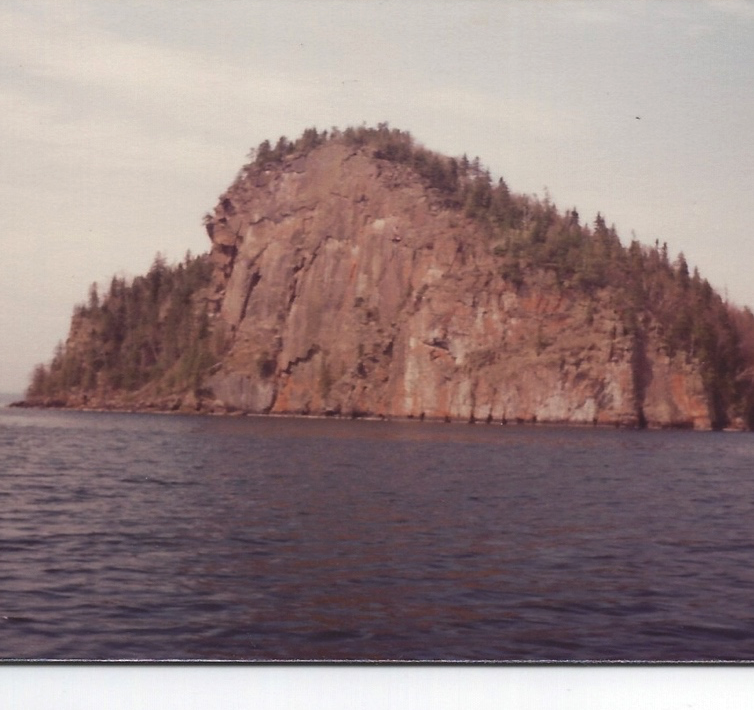
Elusive Lake Nipigon brook trout
Then there were those elusive brook trout that we dreamed of catching.
After a few trips to Albert island, we ventured a little further down the lake. This was about the time, in 1963, when I purchased a 16-foot Thornes aluminum boat and used a 10- and 15-horsepower motors together. Quite an experience but lots of power. We stayed on a small island in Three Mount Bay this side of Smoke Point, both on the west side just out of South Bay. Once we even traveled to the Gross Cap, Eddie, Gary, and I. The lake was so exciting and beautiful, we all enjoyed exploring it.
In later years when a road was put into South Bay 1968, we would travel down the lake from the access, or camp at the landing, traveling as far as Smoke Point at mouth of McIntyre Bay and Alexander Island for the day.
Barb (my wife), myself, Bud, and Dot made many trips to a small Island in a Three Mount Bay this side of Smoke Point. There was a nice, sheltered campsite there.
I remember the time Barb and I were in one of the small bays in Three Mount Bay for a day of fishing. I, the great fisherman, tried to inform her how to catch those brook trout. You have to do this, you have to do that, sort of thing. She paid no attention to my insistence, which hurt my feelings. Sure enough, who caught the big ones — a couple of nice five pounders. You guessed it, she did. I had the privilege of netting them. She never rubbed it in, and I was proud to show them off to the other anglers that evening. Look what my bride caught today.
Eddie, Gary, Dale, and even my brother Mike made many trips down the lake. Mike only made one trip. It was a rough evening crossing, and I could never convince him to come back. I will always remember that terrified look in his eyes at the huge waves we had to travel through to reach campsite.
Years later we would travel to Gull Bay and on to Jackfish Island at the north end of lake to camp and fish there for a week.
Caught in old fish net
It was the early 1960s, Ralph and I made a June trip to Lake Nipigon (Three Mount Bay) for an overnighter. On the first day, Saturday, we fished north, down the west shore, and camped in the bottom end of the first bay by a small creek a mile or so south of Smoke Point. Ralph caught three nice brook trout that evening.
After a hardy breakfast the next morning of eggs, bacon, toast, and coffee, we packed up the tent and gear and started fishing our way back home.
A slight drizzle had started, and the waves increased. The water was grey like in the fall and the waves kept getting bigger and bigger.
After fishing most of Three Mount shore back, we headed toward the Otter Head for home. There was a north wind blowing that day and riding up and down those four- and five-foot swells was a lot of work, but we were safe. Each huge wave was endured one at a time.
We spotted a fishing net about 200 yards off Otter Head. It had been in the water all winter and was a mess. There were many fish in it, all moldy and rotting. We took a good look at them but decided to move on.
The motor groaned and stopped as I put it in gear to leave. You guessed it. We had picked up part of the net. I tried reversing the motor, but the nylon was too strong to release.
We sat there just bobbing up and down. “What about the kicker,” Ralph said. “I’ll try that,” I responded, and we can get around the corner into the lea. As soon as the kicker was put into gear, it too, became tangled. Now we have no power, and the wind is blowing us up onto the sheer cliffs of the Otter Head.
Spare motor fortune
For reasons unknown, we had brought along a 10-horsepower spare motor that was in the bottom of the boat. But how does one get one small motor off and another one on in four-foot waves?
When the wind finally blew the boat to the cliffs, Ralph jumped into the 45˚F water, up to his chest. There was a small ledge below. He struggled to hold the front of the boat into the wind while I performed a motor juggling act in the back.
The equipment in the bottom of the boat was now floating when the spare motor started. I dragged Ralph to a small cove down the shore where he was able to climb back in, wet, cold, and very scared.
After cutting the net out of the propeller and Ralph changed into warm clothes, we continued across to Albert Island and then to the overflow, Forgan Lake, and home.
I can’t imagine what would have happened to us if not for that spare motor that started on the first pull. We were only moments from that next wave coming over. There was no shore to climb onto for safety.
When we reached the overflow to exit the big lake, I remember looking back out on Nipigon. To this day, I still remember those ocean-sized waves, grey and ugly with white tops breaking over them.
That trip scared the hell out of me, and you can see why I have never lost respect for this unpredictable lake.
Ralph never came back.
The year of the ice
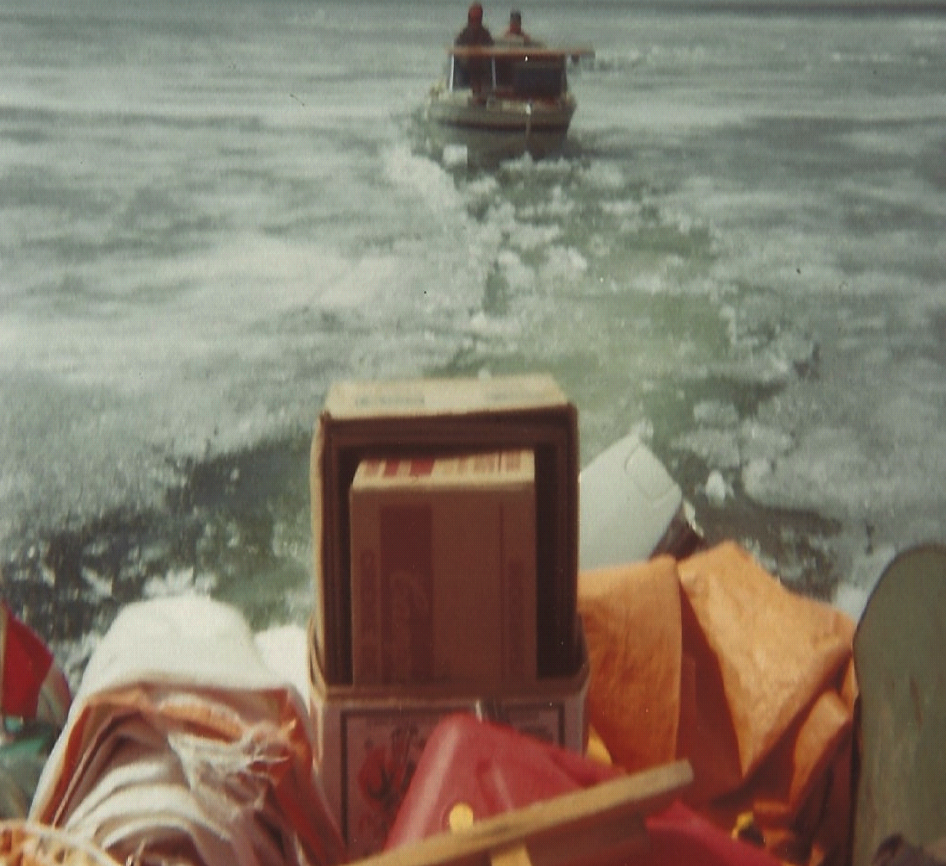
It was 1981, we experienced one of the warmest springs on record. April’s temperatures had been exceptionally warm.
We had regular meetings, planning our trip to Jackfish Island on the north end of Nipigon, with myself, Jim, Randy, Renzo, Tom H, and others. These meetings usually included drunken reminiscing of past years, and were a good excuse to get together during the cold winter.
Someone got the bright idea that we should go sooner than our usual date of on or around May 24. The year before we had such great brook trout fishing that a majority of the group thought it would be even better if we got there earlier.
I still remember arguing with them about the ice being off the lake. As usual, the majority won. My comment was “I’m only going for the experience,” for I had reservations about this early date of May 15.
As usual, we did our shopping together for the trip, buying more food than we needed.
Partners since 1974

Jim and I have been partners since first going to Jackfish Island in 1974. The others found new partners each year depending on who could get the time off from work.
Sometimes, Randy went with Donny, or Renzo. Sometimes, Donny went with Tom H. and once, with my brother Ricky. There were trips when everyone came, usually bringing two or three boats.
We left town Friday right after work for the Gull Bay landing. It was called Kings Landing, just a mile this side of the Gull Bay Reservation. We paid the Indigenous a fee to launch boats and park there.
The boats were fully packed with gear for the week trip. It was a warm day with light wind, and it looked good for there was no ice to be seen. “See,” they said, “No ice Tom.” “Wait till we get out of the bay on the main lake,” was my reply.
When we reached the mouth of Gull Bay about 10 miles from the landing, there was ice as far as the eye could see.
By now it was about 9 p.m. and we had a decision to make. Go back, camp near, or go on through the cracks in the ice and try to reach Jackfish Island.
Jim’s boat was fiberglass and Randy N’s boat was aluminum, so Jim and I went first. Off we go, weaving in and out of the cracks in the ice, heading for the undercliff shore about seven miles away. The only good thing so far was that it was warm and there were no waves to put up with. It was not too bad, the ice was soft, but it was slow going, and we never knew when the ice might get solid.
The sun set at about 10 p.m.. We were still miles from shore. Again, luck was with us. It was bright like day, with the full moon above. There was no problem navigating through the cracks in the ice heading toward the island.
The campsite came into view at about 1 a.m., with just a half mile to go, but conditions had changed, and the ice was too thick to get through.
A couple of miles back, we had seen open water in the moonlight. The undercliff channel and Dog Island was ice-free. We could get to the camps at the east side of Jackfish Island and stay there for the night.
By 2 a.m. we had reached the cabins, cold and exhausted. Tomorrow we will try again.
Early the next morning after coffee, we loaded up and headed out toward the north end of the island, where our usual campsite was. The ice was thick, very thick, but it was only 300 more yards to the bay. It was ice-free and the campsite was in view.
We played icebreaker. It was fun. Up on the ice, rocking back and forth till it cracked. It took us four hours to get to that open water in the campsite bay. At times I would get out of the boat on the ice with a rope, pretending to be pulling them. The boys took pictures.
Finally, we reach the campsite. What a relief. The whole trip was a disaster. The lower unit fell off Jim’s old mercury outboard. It had to be wired back on to get home. Breaking ice with it had not helped. Fishing was very poor.
We had to wait two days for the ice to blow away before we could get out on the main lake, to fish. The food was excellent, the horseshoes were fun, the lake was pretty, and it was an experience.
Every trip is an adventure when you go out on Misses Nipigooness, as my partner Jim called her. You never did know what to expect.
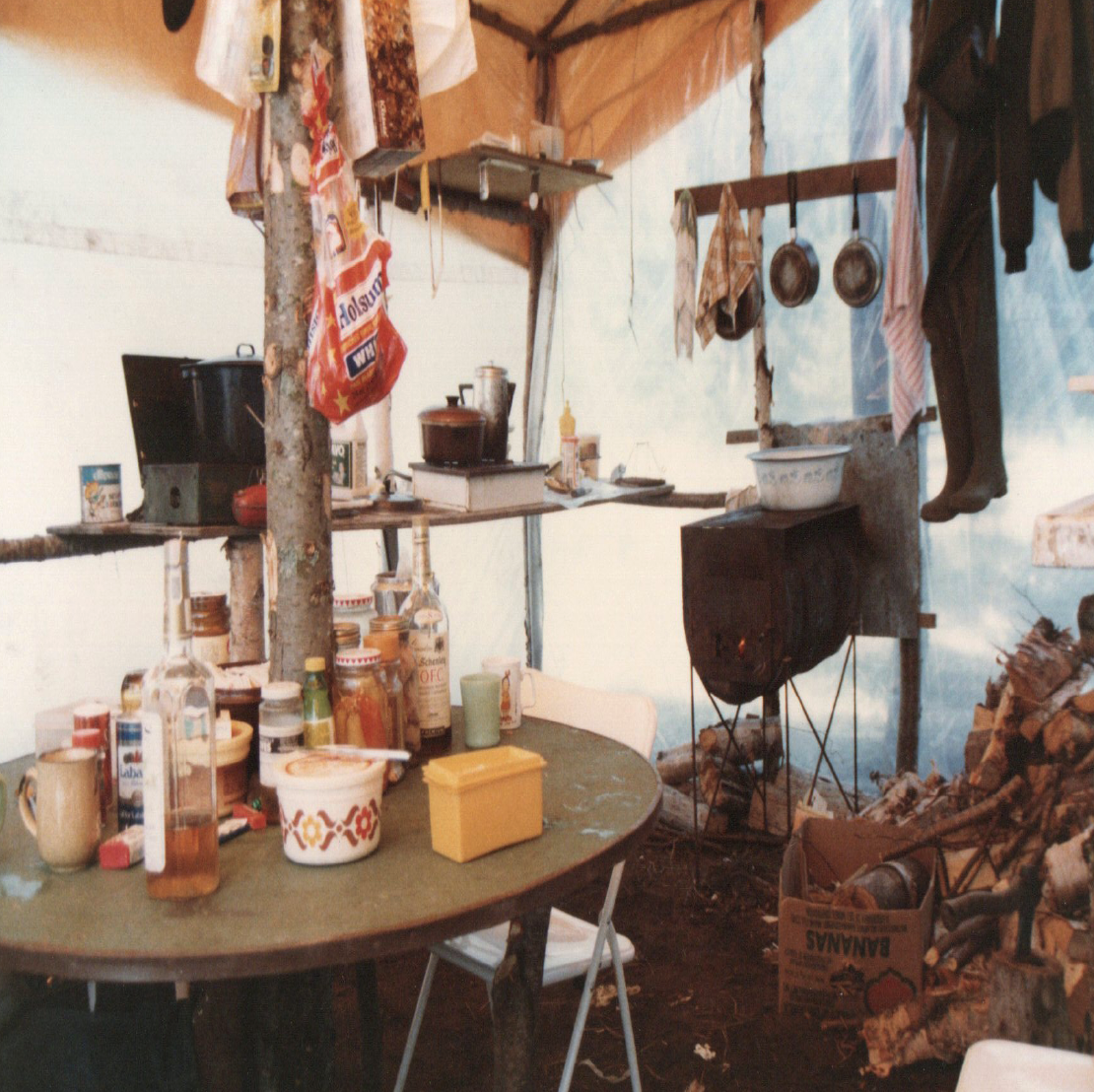
Jackfish Island and Mount Royal
Solitary Mount Royal rises from this beautiful island. Other features include Sandy beaches in coves that protect you from the wind, caribou grazing in meadow, the Ranger Shack with crinkled shingles, white siding and red trim. This was Jackfish Island at the north end of Lake Nipigon, our tranquil home for a week.
In the early 1970s, we traveled to Jackfish Island to fish for elusive brook trout, or specs, as we called them. Years before, the ministry had built a fire tower and residence for a watchman on the island. He would spend time in summer keeping lookout for forest fires in the area. The tower was on the highest point of land around, some 550 feet high, and the little white cabin was in a secluded, protected bay at the foot of it.
The tower was eventually removed, but the little white cabin remained and was used by stranded boaters, fishermen, and the ministry till approximately 1980 when it was destroyed by fire. I am not sure how it burned down.
The cabin was our home for the week. It was very interesting. The graffiti on the inside walls and rafters told the stories of the many people who used it. Interesting stories of successful fishing trips, names of guests, where they were from and the dates of their stay.
I regret that I never had a chance to remove some of the wall paneling before the cabin was destroyed. Some of the stories were hilarious.
I always remember the one story that said what had been caught that day. One otter, two seagulls, a cold, but no fish. Something like that. Very funny.
There was also a number of Indigenous cabins on the east side of Jackfish Island. In the summer they are used for ceremonial activities, rented to guest anglers, and for overnight residence for Indigenous anglers.
We stayed in these cabins during my first visit to Jackfish Island, in 1974 with Frank N and my brother-in-law Jim N. The Indigenous Peoples brought a load of gas up from Gull Bay for us on their fishing tug, and we would repay them with a huge spaghetti supper and celebrate till the wee hours. Frank and Jim had been using the cabins for many years prior to my first trip in 1974 and had made great friendships with the Indigenous, all looking forward to their annual meeting each spring.
After Frank had an incapacitating accident — falling down his basement stairs — in 1976, Jim and I continued to use these cabins for one more year.
By 1978, it was getting difficult to secure a cabin because of the demand by American anglers. It was a first-come basis, so we started using the little white cabin on the north end of Jackfish Island, enjoying the company of Billy and Nickidemos, who had been residing in it each spring for many years.
When the cabin was destroyed in approximately 1980, we still used the bay to camp in. Bringing a wood stove, tarps, tables, chairs, even a sink, and built a 20 by 20-foot shelter to cook and party in. At night to get away from the noise, each group had a tent to escape to.
In the morning, someone would fire up the wood stove make coffee and breakfast. We would play horseshoes on the beach for a couple hours. Around noon it would be time to get the boat ready for fishing. We never got up early to fish, which had a lot to do with the partying, but by noon, the weather had usually stabilized for the day. We knew which way to travel because of the wind. Our fishing sometimes took us 20 miles from the campsite, so having a good idea of the weather helped.
Jim and I were the last to go to the north end of the lake in 1998. We had found an old cabin on the southeast side of Kelvin Island that had been built by some fellows from the Red Rock-Nipigon area. They had stopped using it.
With some plastic and stapler, pry bar and shims, we sealed and levelled the old cabin good enough for the last two years Jim and I traveled to Nipigon together. One day, Jim was diagnosed with cancer, and passed in September 1998. I miss his companionship dearly.
Jim and I enjoyed many years together on Jackfish and Kelvin Islands. It was the beauty, freshness, and tranquility that captured our imagination.
Fire tower on top of Mount Royal on Jackfish Island 1946

Over the years, I researched this fire tower on Jackfish Island. I talked to the ministry, sent them pictures and info, yet they do not have anything on this tower. It seems it never existed. I looked on maps of all old tower locations, but it does not come up. When I did a search online and I received this picture from someone, but they had no info on it, either. I was to the top of Mount Royal, saw the concrete erection pads, stayed in a ranger shack, and fished off the old dock crib that a tugboat must have tied up to. It is a real mystery, and I am still sleuthing.
The Jig Fly
It was early June and Lake Nipigon was at her finest: calm and clear. This was one of those fun-day memories that Jim and I enjoyed together on Misses Nipigoonus, as he called her. It was another great day on the lake that held so many enjoyable memories for us. On the south side of Kelvin Island, there are many shallow, secluded bays where brook trout love to hang out in the spring. On this beautiful, warm day, we worked our way among the huge boulders that stick up randomly throughout. We would cast our lures beside each rock to see if the illusive trout would be hiding beneath.
“Jim. Look at my jig fly that landed on top of that flat rock over there. Can you see that big spec looking up at it?”
“Where?” he said.
“The spec is under that flat rock, the one right over there,” I pointed.
“I can’t see anything,” Jim said.
“What, are you blind, Jim? Watch when I pull the jig off the rock that spec will probably grab it.”
“You are really losing it Tom, have you had too much sun?”
“Watch.”
I flipped the fly up off that rock and into the water. Instantly, to my surprise a huge brook trout came up grabbed it and took off. The look on my face and Jims must have been comical, for the imaginary fish was really there. “Tom,” he said, “You are sure full of shit.”
Many days were like this, Jim and I laughing, dreaming up scenarios of how we could get those big brook trout to bite. Making up and singing silly songs and dancing in the boat when a five or six-pound trout was caught. These were wonderful great memories of Jim and I together on Lake Nipigon. I will treasure them forever.
The bear in camp
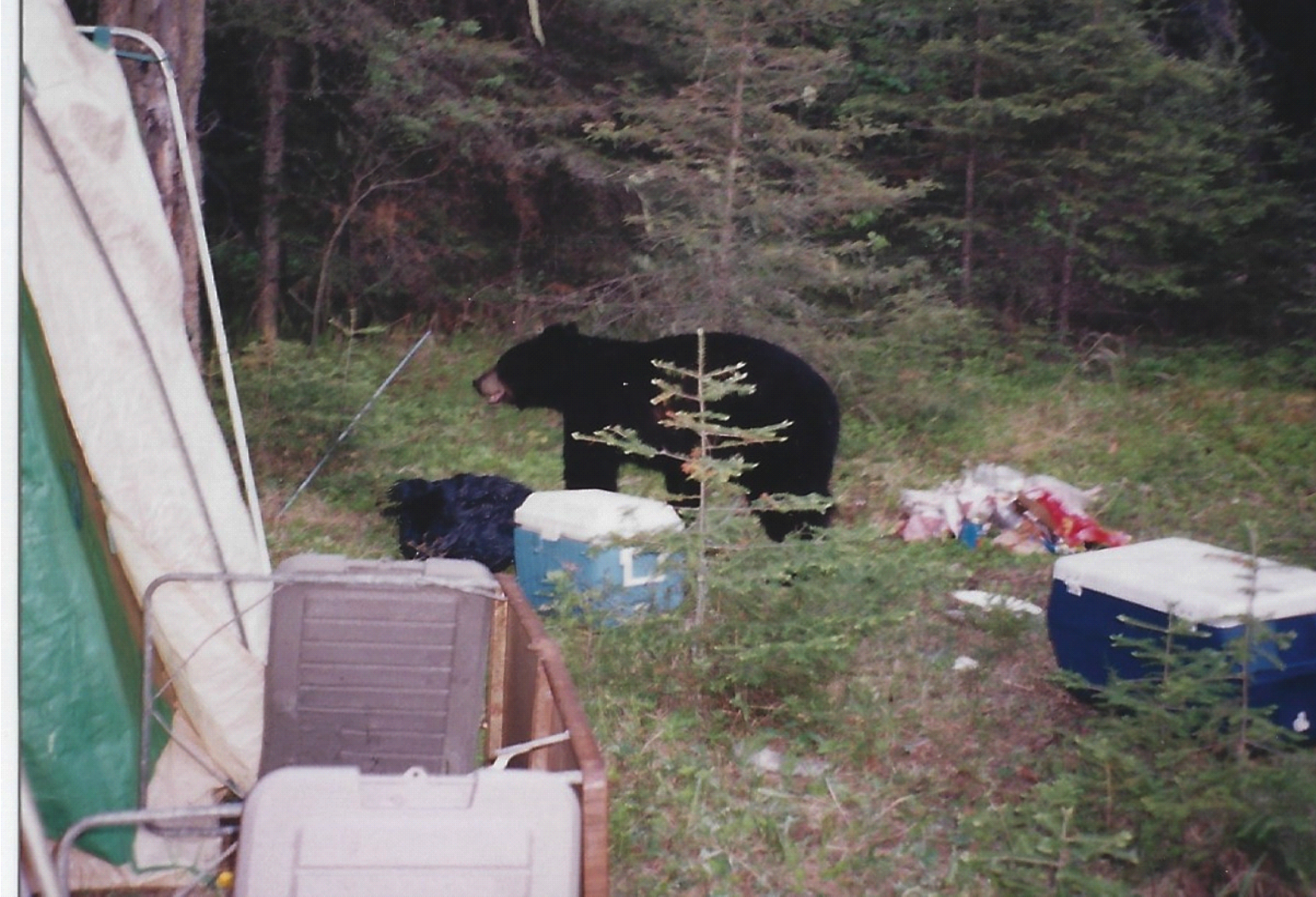
It was just another springtime trip to Jackfish Island on June 12, 1996, with warm, sunny days, great fishing, and another unforeseeable experience.
Jim and I arrived. We set up a sleeping tent and cookhouse, relaxed, played a few horseshoes. This was just another normal trip.
Tomorrow we will set out on the lake and chase a few specs down, have fresh fish for supper and relax some more. Is this boring or what?
On Friday, we have to go back to Gull bay and pick up Renzo R., who is coming for the last three days of our stay.
The fishing was excellent for two days, lots of eaters, just what we wanted. On Friday morning, we got up early 6 a.m. and headed the 35 miles back to the Gull Bay landing to pick up Renzo.
He was there as promised and the three of us headed back to camp. The day was sunny and the lake was behaving, calm and still. Renzo got all fired up when we told him about the good fishing. We unloaded his gear, had a snack, and headed to our favourite spots. Fishing was still good, and we kept a couple for supper.
Returning to the camp bay after the day on lake, something seemed off on shore. “It must have been awful windy here today,” was my comment, for things seemed to be scattered around. Sure enough, when we got on shore it was apparent it wasn’t the wind. It had been a bear. You would not believe the damage that animal had done.
The dining tent was down. A table with a Coleman stove was laying in what was a tent. The bear had climbed up on the cooking table and when it collapsed, dragging pot pans and everything else until he tore an exit in it.
Every package can and carton had bite marks in it. It drank four two-litre bottles of pop, ate all the butter, milk, oil, and fruit.
This bear had dragged the large cooler 100 feet away, opened it without putting a tooth mark in it, unwrapped $40 in steaks without damaging the butcher’s paper and devoured them. There was a four-inch rip in our sleeping tent over my sleeping bag, with sandy footprints on the floor where the bear had walked around. It took my sweet-smelling pillow 50 feet from the tent. Probably needed it for a snooze after eating the steaks. This was strange.
The bear is back
We patched the sleeping tent, gathered up whatever was usable, and had supper from the cooler in boat, then retired for the night. It was about 7 a.m. when I awoke to this sniffing at my side of the tent.
“Jim, the bear is back.”
We both jumped up and dashed out the tent door. I was at one corner of the tent, Jim was at the other, and the bear just stood there at the other corner, facing Jim. Bang. Off goes the bear across the field and into the bush.
Jim had brought his handgun, to my surprise. There was a lot of blood in the grass. I’m not sure where he hit it.
We cleaned up the campsite, packed the boat and got ready for home a little earlier than we wanted. The equipment was a mess, and none of us felt like staying till end of week. We could have eaten raw fish for a couple of days.
Before leaving for home, I asked Jim for his gun and how to use it.
“I’ll go have a look for the critter, it should have expired by now.”
Through the grass into the bush I went, ready, just in case. The blood trail was good, to 100 yards, 200 yards, 300 yards. The blood began dwindling another 100 or so yards up the mountain. Finally, I gave up.
That was the last year we camped on Jackfish Island. We had never had problems with any animals before.
The next year, in 1997, Jim and I traveled to the east end of Kelvin Island and stayed in the Red Rock boys cabin. It was in some need of repair, but good enough.
As I have said before every trip to Lake Nipigon are adventures, bears, birds, moose, caribou, pelicans, and critters of all kind. And the beauty of this lake is just unimaginable.
A visitor for brook trout supper
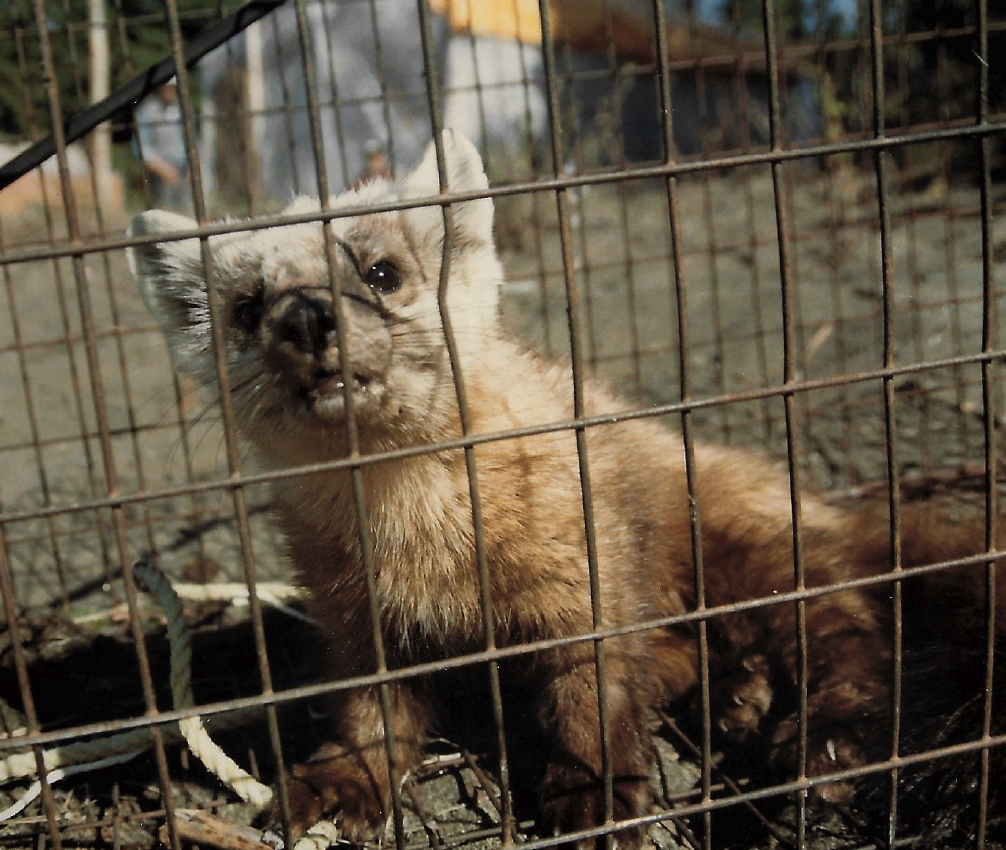
From the early years traveling to the north end of Nipigon, we never left town with a shortage of food. The night before leaving the group, usually six, gathered at our local grocery store. Each one filled the cart with their favourites. Our main meals were the same each year: chicken, steak, pork chops, and hamburgers with all the trimmings. Chips, pop snacks etc., bacon, eggs, coffee and toast for breakfast. After years of this, someone mentioned at our annual windup that we had overdone it again with the food. Too much, everyone agreed.
Someone piped up, why are we not eating the brook trout? In previous years we had released a lot of brook trout. It was decided that every other night at the fishing camp we would have fresh trout for supper. Each boat would take a turn and bring in three fish. It was decided it had to be brook trout, no whitefish or lake trout.
On that next trip to Jackfish Island, on the second night, I asked, “Who brought the fish in for supper?” It was my turn to clean them, Randy said, and they’re in the pail outside the door of the cookhouse.
When I went out to get them to clean and cook, the pail was there on its side but no fish.
“Are you just kidding with me, Randy? Well where are they?”
We finally figured out that something had stolen them. If it had been a bear, we would have heard or smelt it. Must have been something smaller.
Let’s set a trap and see what it is. There was a live trap on shore not being used. A fish head on a string to a stick under the the cage door would do the trick. It was left outside for the night. Sure enough in the morning, it contained a critter. A nice, fat marten inside the trap, and not a very happy one.
Pictures were taken and then it was released on the mainland. We settled for chicken that night for supper.
Yank lost in the fog
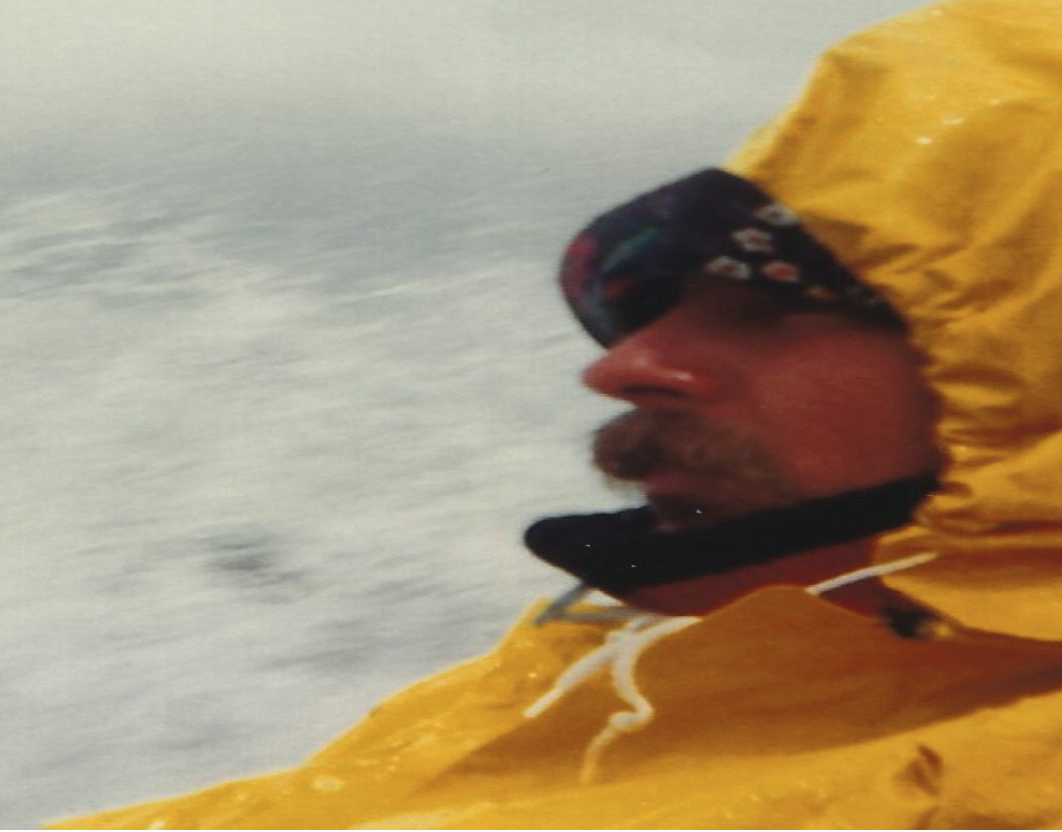
Frank The Yank, as we called him. Jim had given his uncle this name many years earlier.
“Why do you call him this Jim?”
Well, he said, have you ever seen anybody with so much gear in their boat? Most of it he never uses. The grub box has enough dishes for a family of seven; there is enough rope for every tugboat on the lake, and all kinds of other goodies that never gets used, just like a Yank. “OK I get it.”
But the one thing he didn’t have or couldn’t locate was a compass. I’m not sure if he knew how to use one or not. Jim and I always had ours ready when the fog rolled in. There was no GPS in those days.
The rain came and the fog stayed for two days. We were staying in the cabins on the east side of the Jackfish Island. Everyone was getting cabin fever.
“Anyone like to go fishing?” The Yank said. “We could stay in sight of the island so not to get lost in the fog.”
On this trip, the Yank had invited a couple of fellows from work: Gary, and Alan, or Bonkers, as they called him. Both were from the Great Lake Paper Mill. They had brought their own boat but had never been on Nipigon before.
We wouldn’t mind going with you, one said. Jim and I knew better. Off they went, the three of them in The Yank’s boat for an afternoon of spec fishing around Jackfish Island. Jim and I relaxed, I fished, caught a couple of whitefish off the dock for something to do. It was 9 p.m., and the fog was still as thick as pea soup. The boys had been gone since about 2 p.m.
Darkness came, Jim and I were a little worried and not sure what to do. Going out in the dark in the fog was not an option.
“They probably are on shore somewhere for the night.”
At 7 a.m. the next morning, the sound of an outboard could be heard. The fog had finally lifted, and you could see for miles. We ran to the dock to see who was coming. Sure enough, it was the boys. Gary and Bonkers looking terrified, The Yank not so much.
“Where the hell have you guys been? We have been worried about you.”
I had wondered why Jim was not as concerned about his uncle being out all night. He later told me other stories about The Yank on Lake Superior staying overnight in rough or stormy weather. He was used to him not showing up.
So, they told us what happened. They headed out to fish around Jackfish Island, but Birch Island, which is better fishing, was in sight, so they headed to it. After going around Birch Island, the Yank decided to head back to Jackfish Island through the fog. You guessed it, he did not have a compass.
“It will be all right, I know where I’m going,” was the Yanks comment.
After going around in circles for two hours in the fog with three-foot swells and whitecaps, not knowing where they were, they finally ran into a shoreline. Nothing was recognizable, so they decided to fish and keep going, hoping the fog would lift.
Night came, so they pulled the boat up on shore and had a drink of whiskey and a snack; Gary said he threw it up because he was so scared. They didn’t sleep much that night because it was cold and damp and they were both terrified, never expecting anything like this to happen.
Jim and I knew the Yank and laughed, knowing things that had happened with him before.
The best parts of this story:
- They were only 200 yards from camp, on the mainland at Redstone Point where they stopped for the night. Within yelling distance of camp.
- They had caught fish but didn’t know where they were. There were fish boxes on shore in a small bay, from the commercial fisherman, they said.
Jim and I spent days looking for them in later years on. Just another experience on the big water.
Gary and Bonkers well they never ever came back. No way, they said.
Jim and I finally found those fish boxes and the specs on that shore years later; they were quite a few miles from camp.
For a few more years, The Yank, Jim, and myself traveled back to Jackfish Island. Then one day, The Yank fell down his basement stairs and was hospitalized for the rest of his life.
Jim and I continued our annual trip to the north end of Nipigon for many more years.
Then Jim was diagnosed with cancer in 1997 and passed on Sept. 7, 1998. That was my last trip to the north end of the lake. I continued to fish out of South Bay untll 2007 when the ministry made Lake Nipigon a trophy lake with a one-fish limit of 22 inches. They took away the best-eating trout you would ever taste. Beating all your salmon to hell.
We always loved to eat the 18-19 inchers; the 22-inchers tasted ok but who would want to kill a five-pound-plus fish to eat?
Jim had many hilarious stories about The Yank, his boating trips, and just a lot of funny things The Yank did.
One strange routine he had was to undo the gas line to his old Mercury every night on the trip, start and run the engine till the motor ran out of gas. We never could convince him that it wasn’t necessary.
Another was the amount of weight he would use on his fishing line, 3/8-ounce bead chain, with a heavy spoon in three inches of water. We did more backing up than going forward releasing his snags. His comment was “Don’t tell me how to fish” while Jim and I kept pulling in the nice brook trout.
One of the funniest stories was when I hid a bottle of whiskey in the wall of the cabin we stayed in, on the first day we arrived. At the end of the week, after a couple nights without anything left to drink, I placed the bottle on the table. It didn’t take him long to notice it. He wasn’t sure whether to strangle me for hiding it or give me a kiss. He was sure one happy camper that night, for he loved his whiskey. I’m sure if I hadn’t hid the bottle, there would have been nothing left for the last night. That was The Yank. Fun times and laughs.
Billy and Nicky at the ranger shack
Billy and Nicky spent many years traveling to the ranger shack on Jackfish Island. I don’t know how much fishing they did, but they made the trip every spring, traveling 30 miles down the lake in a large freighter canoe in all weather. Two trips were needed, one for the supplies and another for the refreshments. If my partner Jim was still alive today, he could add some hilarious stories about them. He had known them for years.
I only got to see them for a couple years, until the ranger cabin burned down. They never came back after that. The only thing I can remember is they partied night and day.
One morning when we stayed with them Jim made a huge breakfast for everyone, Nicky’s stayed down for about two minutes. Most of the time, they just fished around Jackfish Island, not venturing too far.
The last two years at Kelvin Island with Jim
Jim and I discovered a nice rustic cabin on the southeast side of Kelvin Island in 1996 while exploring one of its secluded bays. It had been built by some fellows from the Red Rock-Nipigon area. It hadn’t been used for a few years. There were enough bunks in it for a least 10 anglers. They had left an old freezer, a wood stove, and enough conveniences for our next year’s trip.
On our next trip in 1997, we brought some poly and a stapler to seal windows and cracks, and a pinch bar to level the cabin so the front door would close properly. Good enough for a week’s stay. Jim and I had wondered why the fishing had become so poor on that side of Kelvin Island. It had been one of our go-to shores for good fishing for many years. Our conclusion was it was fished out. That was why the cabin had not been used for couple of years.
Jim and I had been going to north end of Lake Nipigon for some 25 years. Jim was a carefree, fun-loving guy who was always teasing — it seemed like he never got worried.
We never talked politics or about family. It was different on these last two trips, he was different, and we became closer.
Jim had been diagnosed with cancer, and I believe he knew it was over for him. He seemed at ease talking about his dear mother, his relationship with sisters and brother, and listened to all my dilemmas. He seemed comfortable with it now. It was different.
In all those years, I had never ever driven his boat with the big motor running. When we trolled while fishing, I usually ran the small outboard. On our last trip one morning as we were getting ready for another day of fishing, Jim said, “Tom, I think you better learn how to operate this boat.” That was the moment I knew he knew the cancer was very bad.
That last year he still wanted to go on our annual trip to his favourite lake, but he was so weak that he couldn’t even carry the gear up the hill to the cabin or unload the spare gas cans from the boat. But he kept on smiling, enjoying the trip, with so much courage.
That was in June 1998 and in September, he was gone. So many memories, so many good times.
More brook trout fishing
Have you ever felt the tug of a six-pound brook trout on your fishing rod? It’s an experience you will never forget. The sheer power of these fish is incredible. Your heart pounds while all you can think is, what if the hook pulls out and the fish gets away? Yes, I have been there, felt it, enjoyed it, and never forgot how rewarding it was.
My early experiences with the brook trout was challenging. We had very little knowledge of how to catch them. Worms, Daredevles, Victory spinners, and small doctor spoons were all used. Everything about brook trout fishing on Nipigon was all a big secret. There was not a lot of sharing details on how to catch them by other anglers.
It took much experimenting to finally catch them. The water was a lot colder than the fishing magazines recommended, and these fish were different. Often, we fished in icy conditions, with water temps in the high 30s and low 40s F. On some days, fish were aggressive, and others, we never got a bite.
I remember one time Renzo R. and I were fishing along the Otter Head shore. We skipped the lures over the skim of ice that had formed overnight, hitting pockets of open water. That was one of the best days of fishing we ever had.
Types of baits to use was always a topic on every trip. Randy and Renzo liked trolling the rippling red fin lures in pure silver. Jim rarely ever stopped using a four-inch silver Blanchard lure with the red diamond shaped plastic trailer on it. We always believed you needed something red on your hook.
Americans that came to the lake used gold-orange floating Raps on planer boards. They were able to get into shallow water and stay away from the rocks with their big boats.
Worms fed the camp
At first, I rarely ever took the worm off, using DFT Colorado blade spinners in silver then one with a pearl blade, florescent tip, and worm. I always got teased about the big worm cooler I brought on trips.
Jim seemed to get bigger fish most of the time with his lures, but the worms fed the camp. Years later, I never ever took worms to Nipigon.
There was a time when we first started fishing Nipigon, that the only lures we used were red and white Dardevle spoons, very light ones by Lucky Strike with some fluorescent silver and black-orange spoons. We used silver blue Little Cleos, too.
It was at the north end of lake that things changed in later years. I had picked up a silver Bagleys balsa wood crank bait at DR sporting goods store in Thunder Bay. It had been on sale. When this bait hit the water, I knew I had discovered something special. It was the start of a great new way to fool those elusive brook trout.
This hot bait caught a bunch of fish that day, then a rock finally stole it. I ordered more when returning home. Different sizes, shapes, depths, all in silver, they worked great.
After that day things changed, we started using Shad Raps, walleye divers, or any kind of shallow-running crank baits in smelt and perch imitating patterns.
Another great way to fish for these elusive brook trout was at a campsite, with a worm and bobber, by throwing out a line sit from shore, and relaxing. I tried it from the boat on slow days and it worked great.
The ultimate lure came along probably around 1990 when I started tying jig fly’s 1/8 oz 1/4 oz. in a smelt pattern. They became my favourite go-to bait. The best way to use it was casting from the front of the boat while the others trolled out the back. I was able to cast into shallow water, 18 inches, and jig out to boat. Lots of trout were in shallow. Many times, I would get a strike halfway to the boat.
Open to experimenting
Another experimental bait we used was a spinnerbait with hammered silver willow leaf blade and a smelt pattern, or white bucktail with silver and pearl flash, smelt pattern.
Experimenting produced exciting moments. Along the shore from Three Mount Bay to Smoke Point, we were having one of the better days. I was trying new ways for fun. In my tackle box, there was a silver topwater bait.
When I put it on my line, the other fellows — probably Renzo and Randy — asked, what the hell are you trying now? You should have seen the look on their faces when a nice three-pound brook trout jumped up and grab the lure. My reply was that it was just another hot Nipigon bait. They didn’t like to experiment…just troll, troll, troll.
Jims funeral at The Undercliff
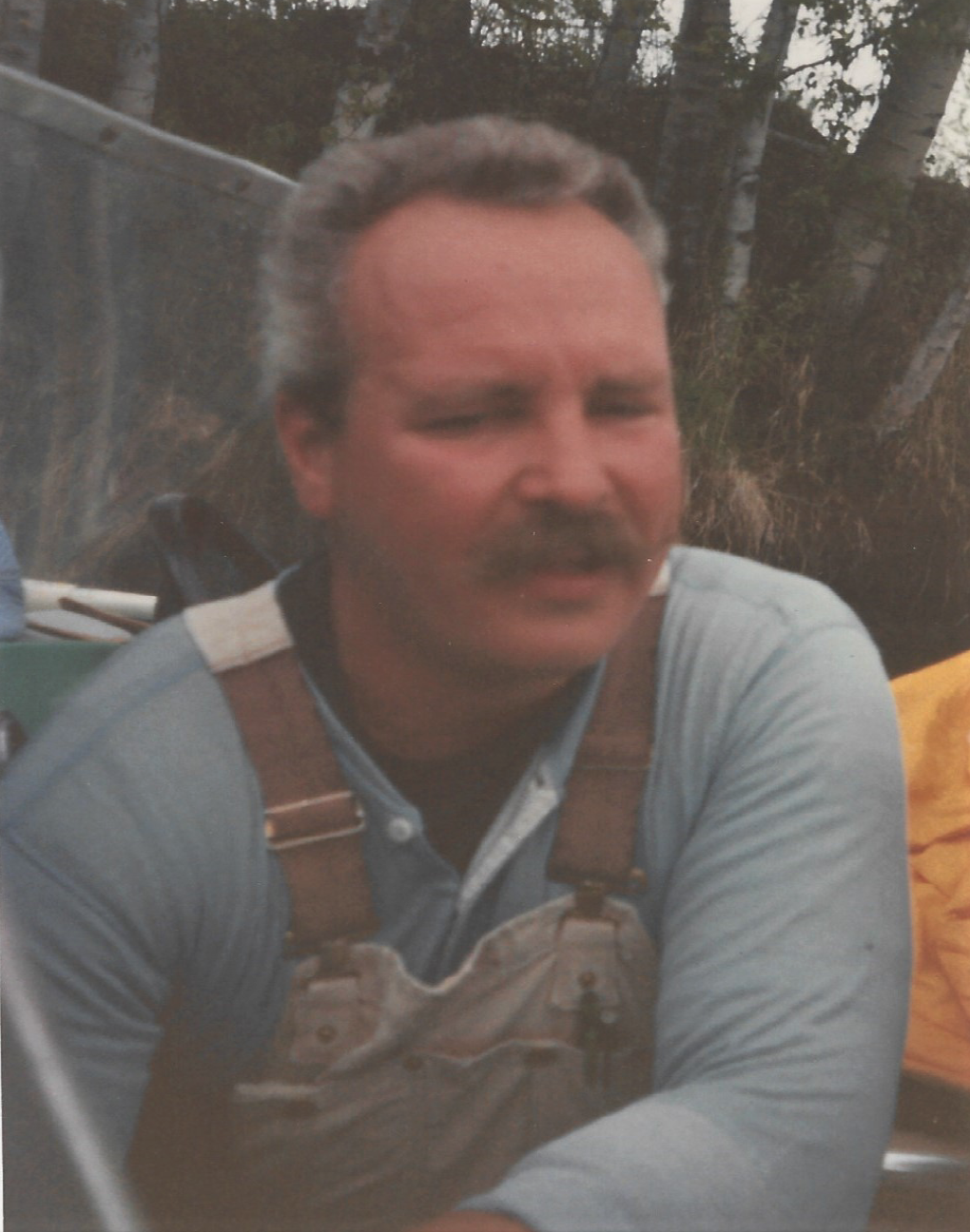
When the tugboat finally pulled up to the dock at Gull Bay Landing on Lake Nipigon, we all realized this was going to be our last farewell to Jim. It involved another trip to The Undercliff 30 miles to the north end of the lake.
Ruth, Jim’s wife, had made arrangements with the tugboat operator to come over from Beardmore on the other side of lake to pick up friends and relatives of Jim. Others were coming with us in their own boats to say our last respects to Jim. Ruth knew that Jim would have wanted his ashes be given to the the lake that he had enjoyed so much for so many years.
It was a beautiful sunny calm and warm day, with not a ripple on the water. A fine gesture from the lake, showing off its appreciation for Jim who had respected and cared for it.
The one-hour ride was beautiful, with not a breath of wind. Finally, we came to a stop, just off The Undercliff. Prayers were said, flowers thrown, tears shed, then laughter. Jim had many hilarious stories he told of the many trips here. It was great that we could share them, appreciate how important the lake was to him and how important he had been in our lives.
A sad but memorable time
For me, it was a sad, but memorable time. We had spent so many hours enjoying each other’s company on the wonderful body of water. It was very sad for me to say “Goodbye Jim, thank you for all the memories.”
There was a lot of silence on the way back to Gull Bay, most reminiscing and others enjoying the beauty of this wonderful lake. The Undercliff is a reference point of land that we used when navigating to the north end of Nipigon. It is on the north end of West Bay, close to Jackfish Island. A sheer rock wall comes straight up out of 100 feet of water then another 200 feet up. It overhangs the water, enough for shelter from the rain.
On one trip, we used a handheld compass in the fog to navigate seven miles of open water, from the mouth of Gull Bay, hoping we would come close to The Undercliff. After an hour of calm and foggy weather it got as dark as night. Panicking, thinking a thunderstorm was coming we put on rain gear. Starting up again we ran into the cliff 50 feet away, it was that dark underneath it. We were very lucky.
The Undercliff
That compass I mentioned before was part of another memory. One that Jim never let me forget and always reminded me of it with his unforgettable laughter. “Tom,” he said, “Do you remember the time a few years ago we were fishing along The Undercliff? You brought out that old handheld compass you said you had for 30 years. Thirty years you said you had this compass. You were juggling it up and down in your hand. Oops, over the side of the boat it went.”
Jim laughed so hard.
Funny, that is the exact place where we left Jim’s ashes. He will have no problem getting around the lake. Thanks again Jim for all the great memories of our times together on your favourite lake. They will live with me forever.
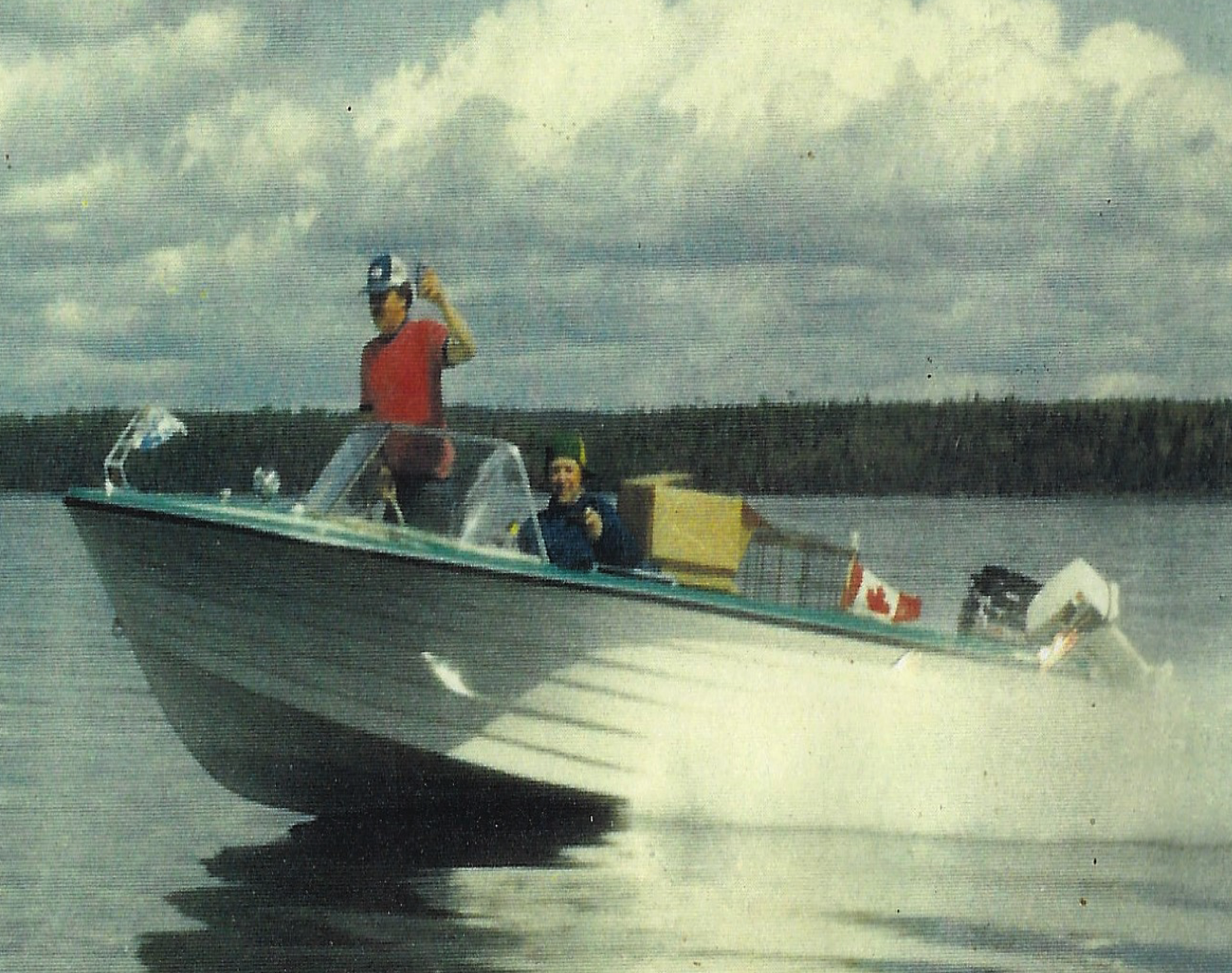
Smelts
It was 1991 when Jim and I were crossing open water heading to Castle Shore from Jackfish Island, between the Inner and Outer Barn islands.
Castle shore was one of are better angling spots. From the north point of Wabinosh Bay to Castle Island. We caught a lot of fish there nothing big, a lot of three-pound eaters.
Out in that open water we came upon a 100-foot circle of small, dead fish. Jim stopped the boat and I retrieved a half dozen of them to investigate. “These look like smelts, Jim.”
There are no smelts that we knew of in Nipigon. I had cleaned a lot of specs before and never ever saw one in a fish. Black flying ants, perch minnows, and cockatouches (small, bottom-dwelling fish)…but never any smelts. The ministry was informed and they confirmed they were smelts. They were aware that they were in the lake now and said they had come down a small creek from a lake trout lake into Nipigon. The lake trout fisherman had been using dead smelts for bait in that lake and some of the eggs got fertilized and grew. That was the explanation.
Over the next couple of years, from 1992 to 1993, swathes of dead smelts showed up along the sand beach shore of Jackfish Island where we camped, sometimes one-inch deep.
Later Years
After Jim died, I never returned to the north end of Nipigon. For a few more years up to 2007, fishing was done out of the South Bay landing. Albert Island, Otter Head, and Three Mount Bay all the way to Smoke Point, were some of my favourite shores.
On one early June trip, Renzo R. and I decided to venture to some new area. It was about a 20-mile ride to the northwest corner of McIntyre Bay. Fishing was spectacular. Wee caught quite a few fish that day, a couple in the five- to six-pound range.
The south shore of McIntyre and nearby islands produced some great fishing, too.
In 2021-22, I had the opportunity to return to South Bay. My buddies John and Rick invited me to join them. It was a stormy day the first year with 40 kilometre winds. A northwest wind with three- to four-foot waves. There was just enough shoreline that was calm enough to fish. It was a good day, some 22-plus-inch specs and a nice lake trout.
The next year, in 2022, we stayed in a cabin on an island for three nights, located just around the corner from Albert Island shoal. It was owned by Henry Hogarth for many years but now his nephew has it. He has built a new cabin, but kept the old one for visitors.
The weather was beautiful and the fishing was just good, with some larger than the 22 inche limit. It was so wonderful to be back on this lake. We had a great time.
Lake Nipigon trophies
I have to admit, I was wrong about turning Nipigon into a trophy lake. The fishing was always good, but a lot of small fish were kept. Now, with the 22-inch size limit and the no live wells or barbed hooks allowed, the lake fishing is spectacular.
The only problem is that word has got out and many more anglers are trying their luck out on the big lake. For example, in 2022, there were 30 vehicles and RVs parked at the boat launch for the last weekend of fishing in September.
In 2023, I returned to my favourite speck lake with John H. for a couple of days. It was not a good trip. We fished many of the hot spots from the past, for about 15 hours. We caught nno fish, with a total of one strike between the two of us.
It was the same as in 2022 with about 30 vehicles at the boat launch each day. It will be interesting to see how the fishing will be in the future.
Lake Nipigon in 60 years
It has been more than 60 years now that I have ventured to this spectacular lake.
There are some things in life that are unforgettable, and Nipigon and all of its beauty is one of them for me. The early fishing in South Bay, Jim and I at Jackfish Island, the great sunrises and settings, the animals and birds, and the very beauty of the lake itself has captured my imagination. I thank the Lord for allowing me to have enjoyed it for so many years.
I hope you were entertained by the stories, and it was my pleasure, reminding myself of all the great times.
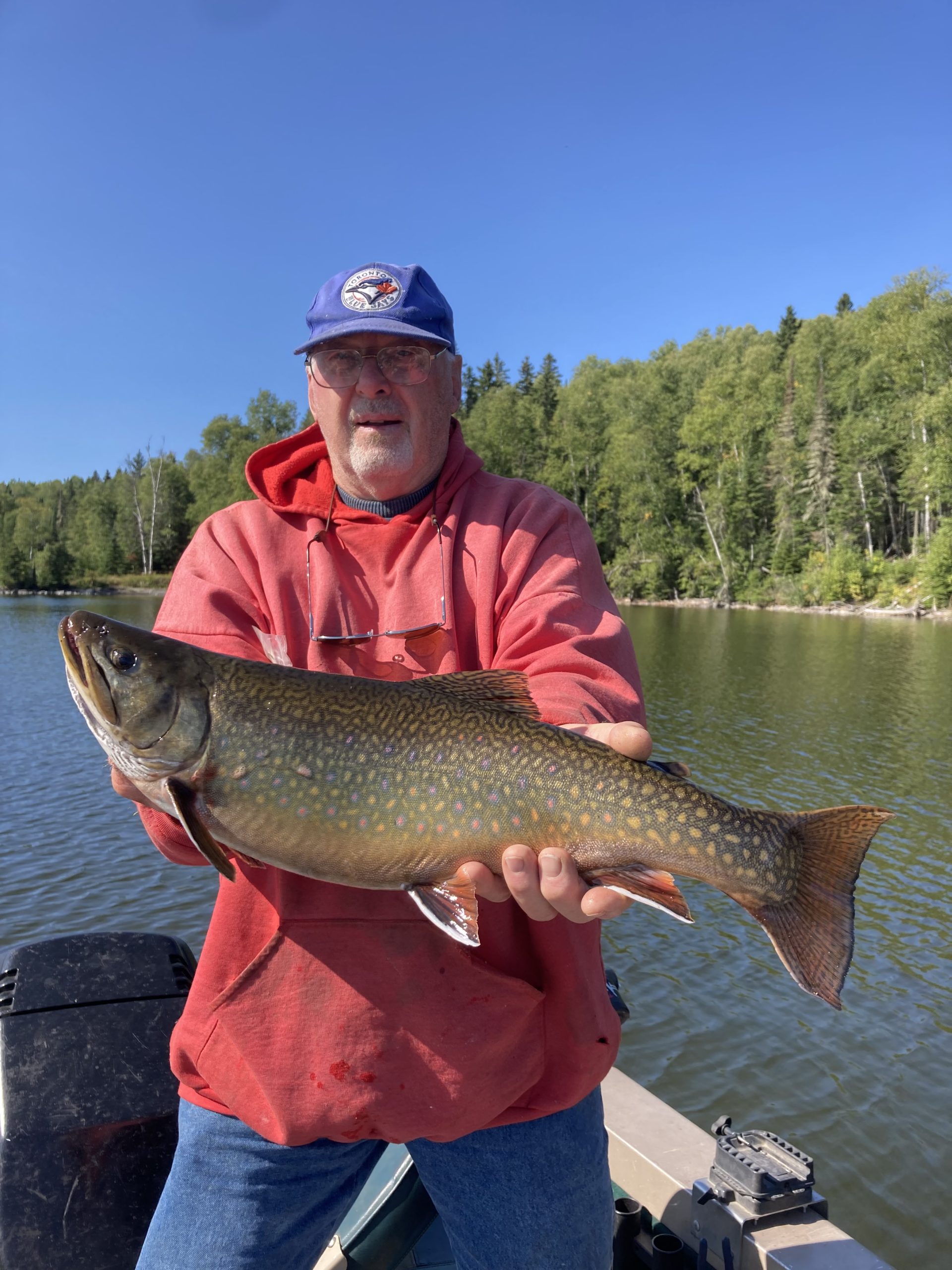


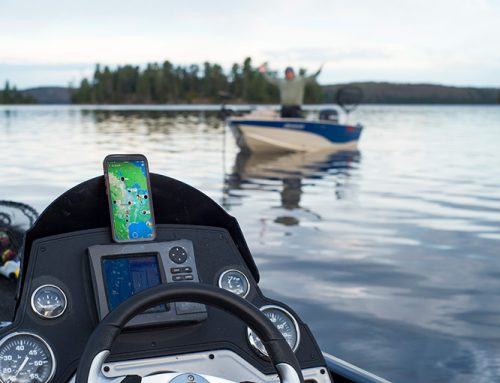
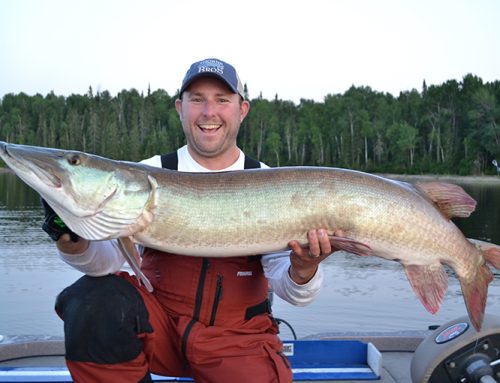
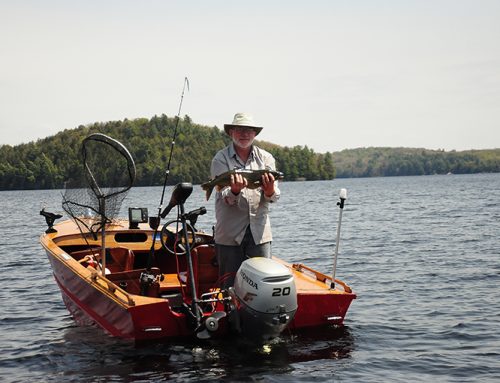

Leave A Comment